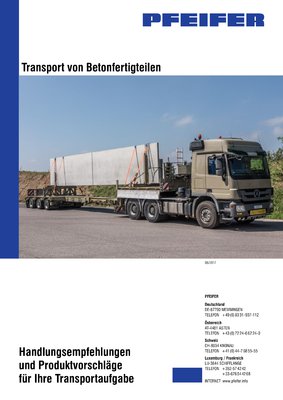Benefits
- The closed surface means that liquids are not absorbed.
- Closed surface, washable, food safe
- High temperature resistance from –40 °C to +120 °C
- Very good resistance to acids, alkalis, petrol/gasoline and diesel
- Extremely tear-resistant due to additional fabric inlay
- Highly flexible, easy to roll, easy to cut
Technical data
Operating temperature
–40 °C to +120 °CCoefficient of sliding friction
Load types Anti-Slip underlays
Standard loadsHandling
1.The contact between the friction partners must be maintained in every driving situation.
2.In order to achieve the optimum slip inhibition, the contact areas (load and loading surface) must be dry, clean and free from ice and grease.
3.Intermediate layers must also be provided with anti-slip mats.
4.Anti-slip mats must be designed such that the load and the underlying loading surface do not touch each other. It is not necessary to lay out the entire loading surface with anti-slip mats.
5.The friction coefficient attainable under practical conditions depends on the material pairing, the temperature, the condition of the material surfaces and the anti-slip mat.
Downloads
Description
-
Benefits
Benefits
- The closed surface means that liquids are not absorbed.
- Closed surface, washable, food safe
- High temperature resistance from –40 °C to +120 °C
- Very good resistance to acids, alkalis, petrol/gasoline and diesel
- Extremely tear-resistant due to additional fabric inlay
- Highly flexible, easy to roll, easy to cut
-
Technical data
Technical data
Operating temperature
- –40 °C to +120 °C
Coefficient of sliding friction
- µ 0.55 at a maximum surface pressure of up to 82.5 t/m2
- µ 0.94 at a surface pressure of up to 10 t/m²
Load types Anti-Slip underlays
- Standard loads
-
Handling
Handling
1.The contact between the friction partners must be maintained in every driving situation.
2.In order to achieve the optimum slip inhibition, the contact areas (load and loading surface) must be dry, clean and free from ice and grease.
3.Intermediate layers must also be provided with anti-slip mats.
4.Anti-slip mats must be designed such that the load and the underlying loading surface do not touch each other. It is not necessary to lay out the entire loading surface with anti-slip mats.
5.The friction coefficient attainable under practical conditions depends on the material pairing, the temperature, the condition of the material surfaces and the anti-slip mat.
-
Downloads
Downloads
Description
Benefits
- The closed surface means that liquids are not absorbed.
- Closed surface, washable, food safe
- High temperature resistance from –40 °C to +120 °C
- Very good resistance to acids, alkalis, petrol/gasoline and diesel
- Extremely tear-resistant due to additional fabric inlay
- Highly flexible, easy to roll, easy to cut
Technical data
Operating temperature
–40 °C to +120 °CCoefficient of sliding friction
Load types Anti-Slip underlays
Standard loadsHandling
1.The contact between the friction partners must be maintained in every driving situation.
2.In order to achieve the optimum slip inhibition, the contact areas (load and loading surface) must be dry, clean and free from ice and grease.
3.Intermediate layers must also be provided with anti-slip mats.
4.Anti-slip mats must be designed such that the load and the underlying loading surface do not touch each other. It is not necessary to lay out the entire loading surface with anti-slip mats.
5.The friction coefficient attainable under practical conditions depends on the material pairing, the temperature, the condition of the material surfaces and the anti-slip mat.
Downloads
Description
-
Benefits
Benefits
- The closed surface means that liquids are not absorbed.
- Closed surface, washable, food safe
- High temperature resistance from –40 °C to +120 °C
- Very good resistance to acids, alkalis, petrol/gasoline and diesel
- Extremely tear-resistant due to additional fabric inlay
- Highly flexible, easy to roll, easy to cut
-
Technical data
Technical data
Operating temperature
- –40 °C to +120 °C
Coefficient of sliding friction
- µ 0.55 at a maximum surface pressure of up to 82.5 t/m2
- µ 0.94 at a surface pressure of up to 10 t/m²
Load types Anti-Slip underlays
- Standard loads
-
Handling
Handling
1.The contact between the friction partners must be maintained in every driving situation.
2.In order to achieve the optimum slip inhibition, the contact areas (load and loading surface) must be dry, clean and free from ice and grease.
3.Intermediate layers must also be provided with anti-slip mats.
4.Anti-slip mats must be designed such that the load and the underlying loading surface do not touch each other. It is not necessary to lay out the entire loading surface with anti-slip mats.
5.The friction coefficient attainable under practical conditions depends on the material pairing, the temperature, the condition of the material surfaces and the anti-slip mat.
-
Downloads
Downloads
Description
 de
de
 en
en

